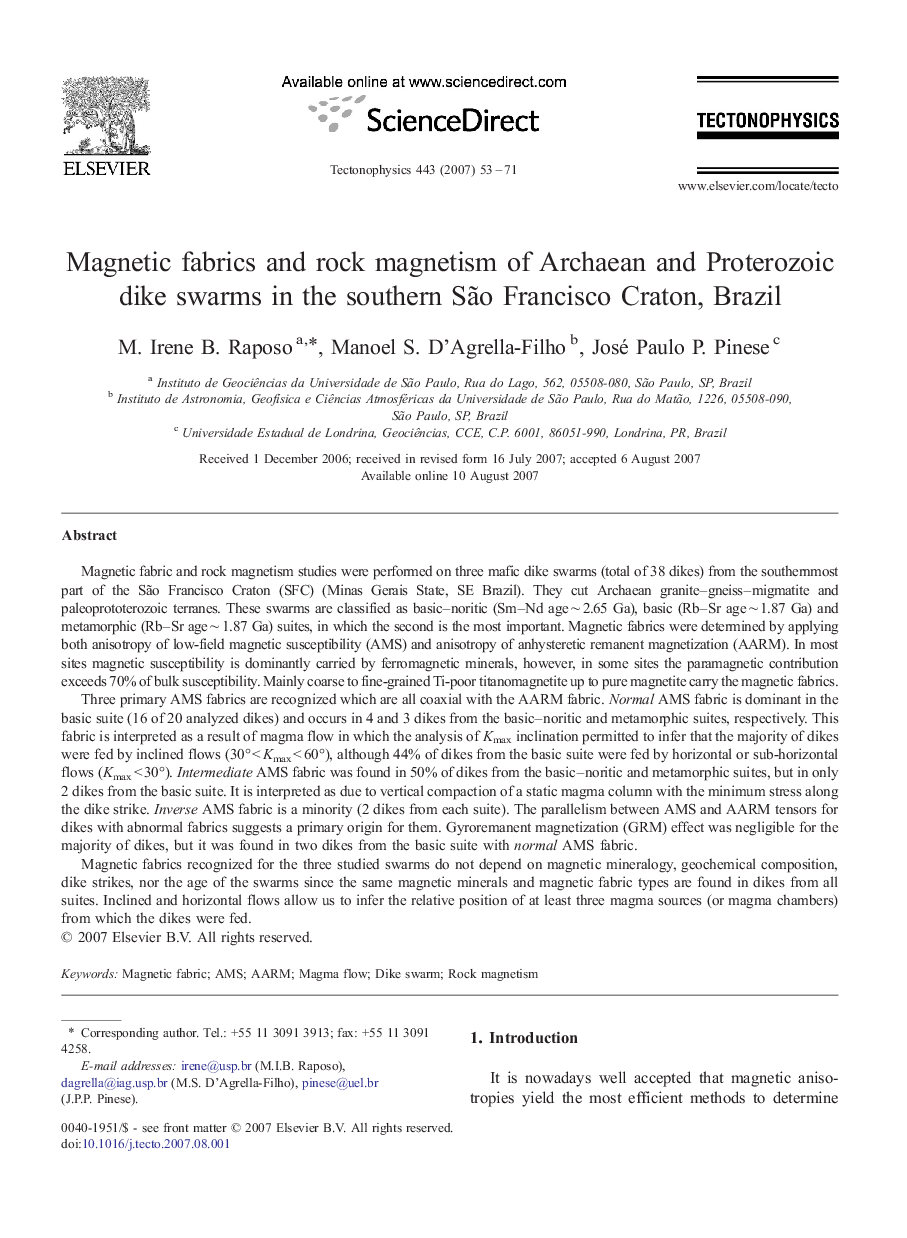| Article ID | Journal | Published Year | Pages | File Type |
|---|---|---|---|---|
| 4694810 | Tectonophysics | 2007 | 19 Pages |
Magnetic fabric and rock magnetism studies were performed on three mafic dike swarms (total of 38 dikes) from the southernmost part of the São Francisco Craton (SFC) (Minas Gerais State, SE Brazil). They cut Archaean granite–gneiss–migmatite and paleoprototerozoic terranes. These swarms are classified as basic–noritic (Sm–Nd age ∼ 2.65 Ga), basic (Rb–Sr age ∼ 1.87 Ga) and metamorphic (Rb–Sr age ∼ 1.87 Ga) suites, in which the second is the most important. Magnetic fabrics were determined by applying both anisotropy of low-field magnetic susceptibility (AMS) and anisotropy of anhysteretic remanent magnetization (AARM). In most sites magnetic susceptibility is dominantly carried by ferromagnetic minerals, however, in some sites the paramagnetic contribution exceeds 70% of bulk susceptibility. Mainly coarse to fine-grained Ti-poor titanomagnetite up to pure magnetite carry the magnetic fabrics.Three primary AMS fabrics are recognized which are all coaxial with the AARM fabric. Normal AMS fabric is dominant in the basic suite (16 of 20 analyzed dikes) and occurs in 4 and 3 dikes from the basic–noritic and metamorphic suites, respectively. This fabric is interpreted as a result of magma flow in which the analysis of Kmax inclination permitted to infer that the majority of dikes were fed by inclined flows (30° < Kmax < 60°), although 44% of dikes from the basic suite were fed by horizontal or sub-horizontal flows (Kmax < 30°). Intermediate AMS fabric was found in 50% of dikes from the basic–noritic and metamorphic suites, but in only 2 dikes from the basic suite. It is interpreted as due to vertical compaction of a static magma column with the minimum stress along the dike strike. Inverse AMS fabric is a minority (2 dikes from each suite). The parallelism between AMS and AARM tensors for dikes with abnormal fabrics suggests a primary origin for them. Gyroremanent magnetization (GRM) effect was negligible for the majority of dikes, but it was found in two dikes from the basic suite with normal AMS fabric.Magnetic fabrics recognized for the three studied swarms do not depend on magnetic mineralogy, geochemical composition, dike strikes, nor the age of the swarms since the same magnetic minerals and magnetic fabric types are found in dikes from all suites. Inclined and horizontal flows allow us to infer the relative position of at least three magma sources (or magma chambers) from which the dikes were fed.
